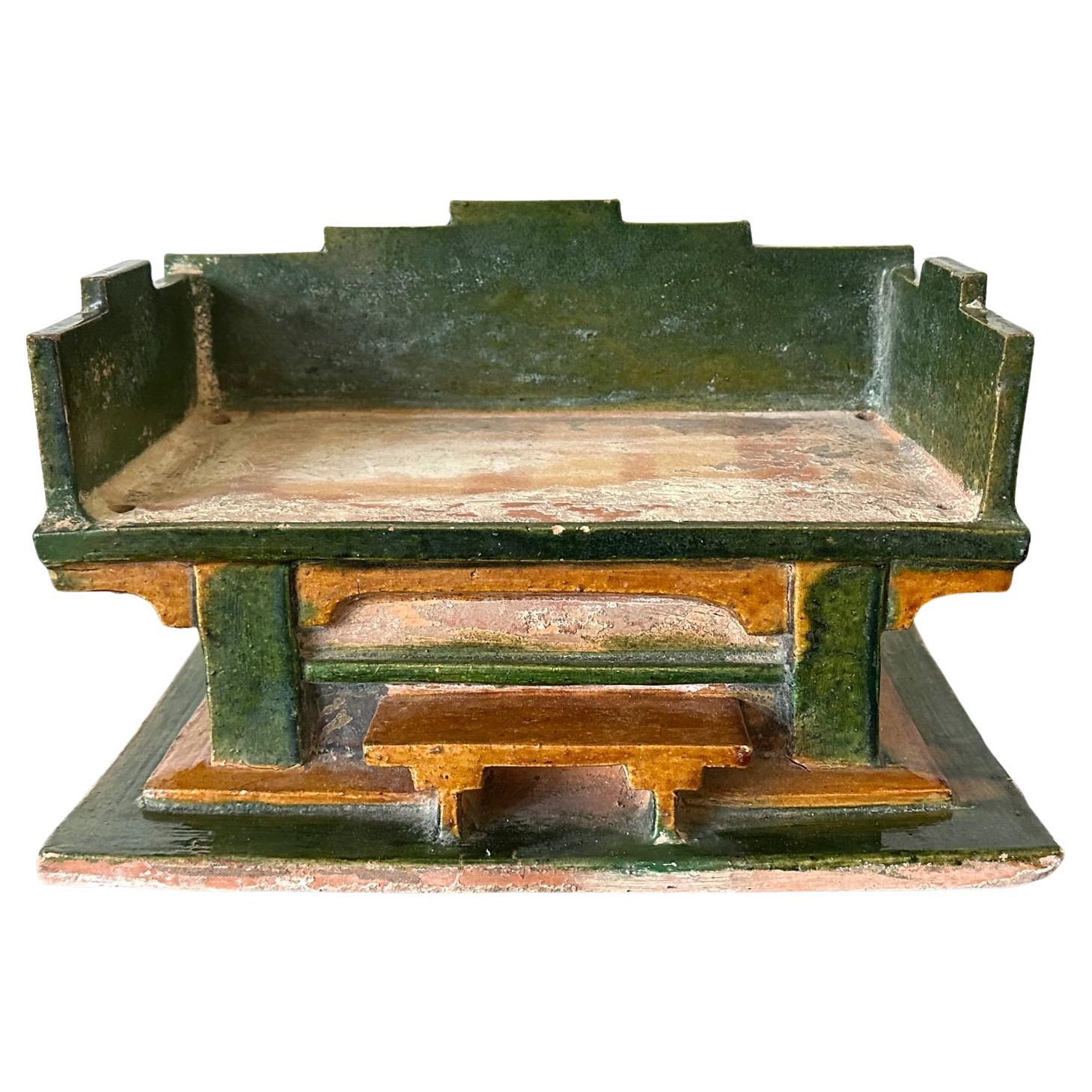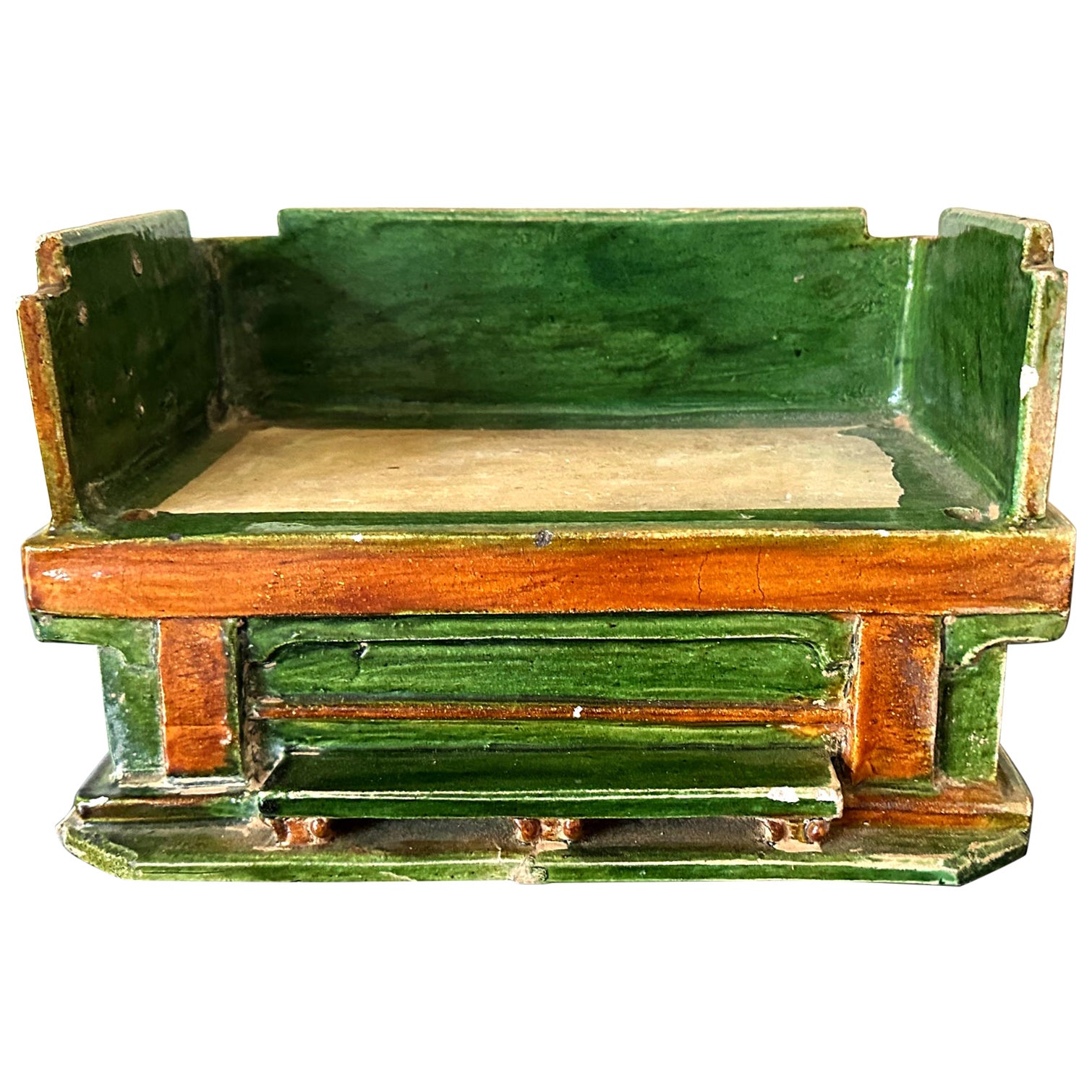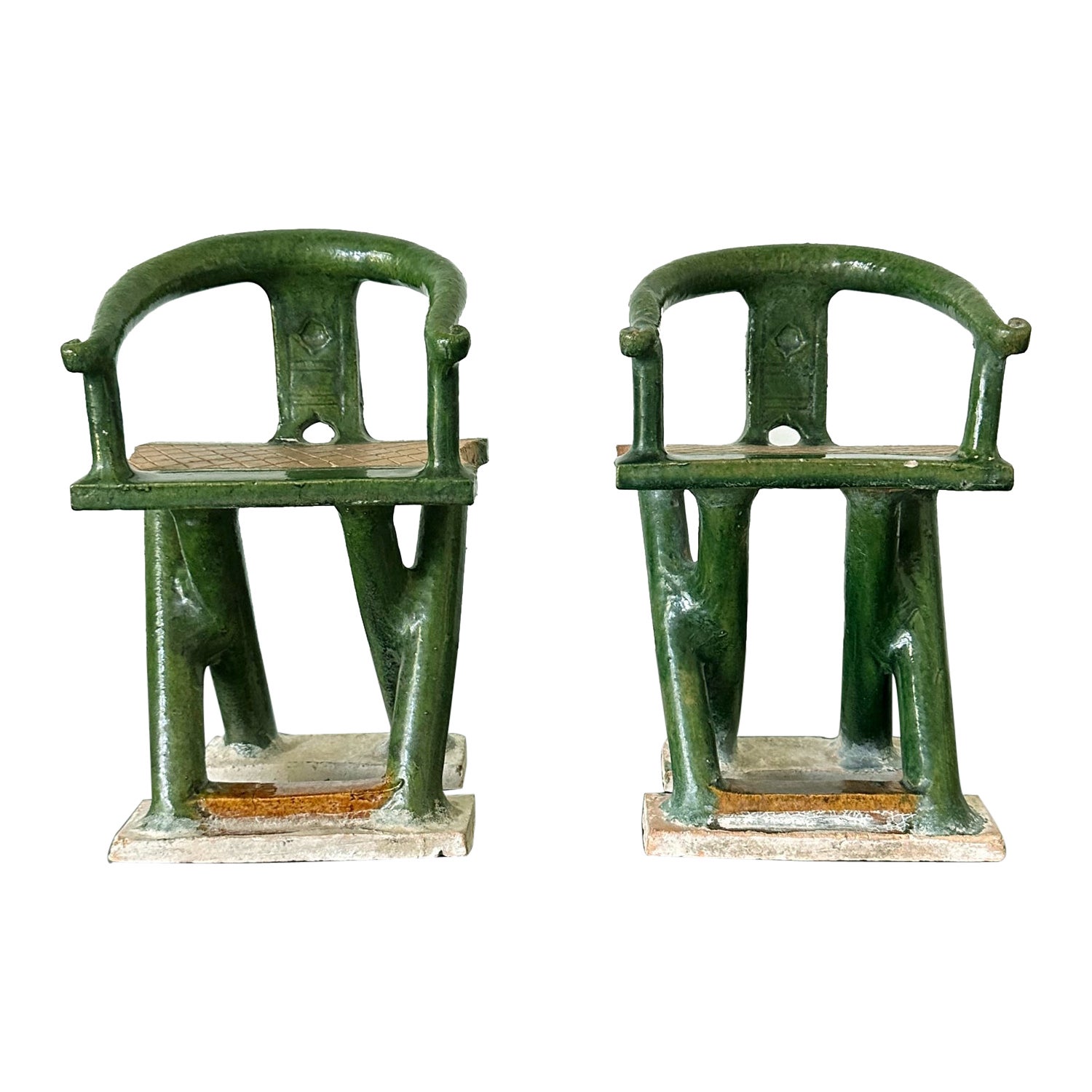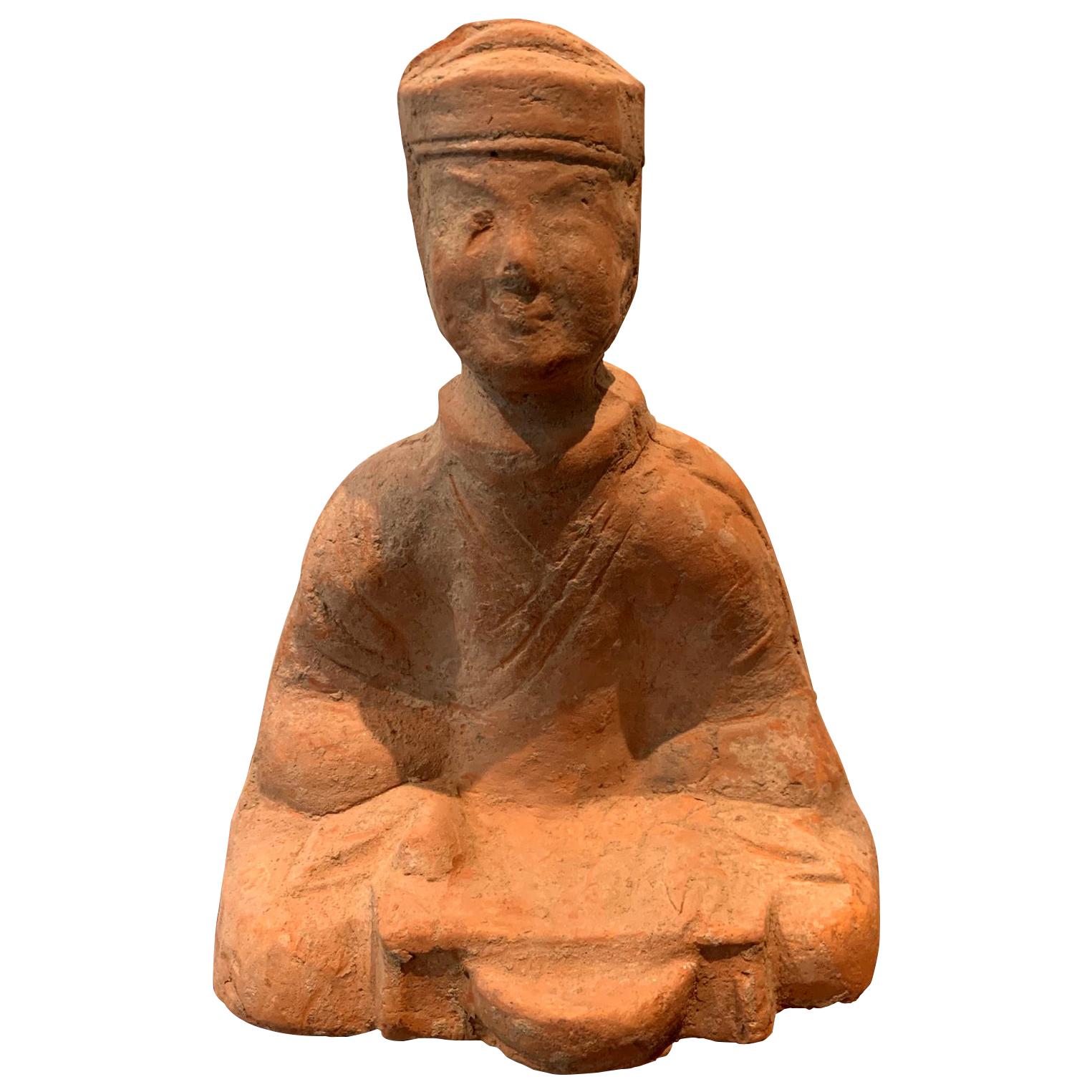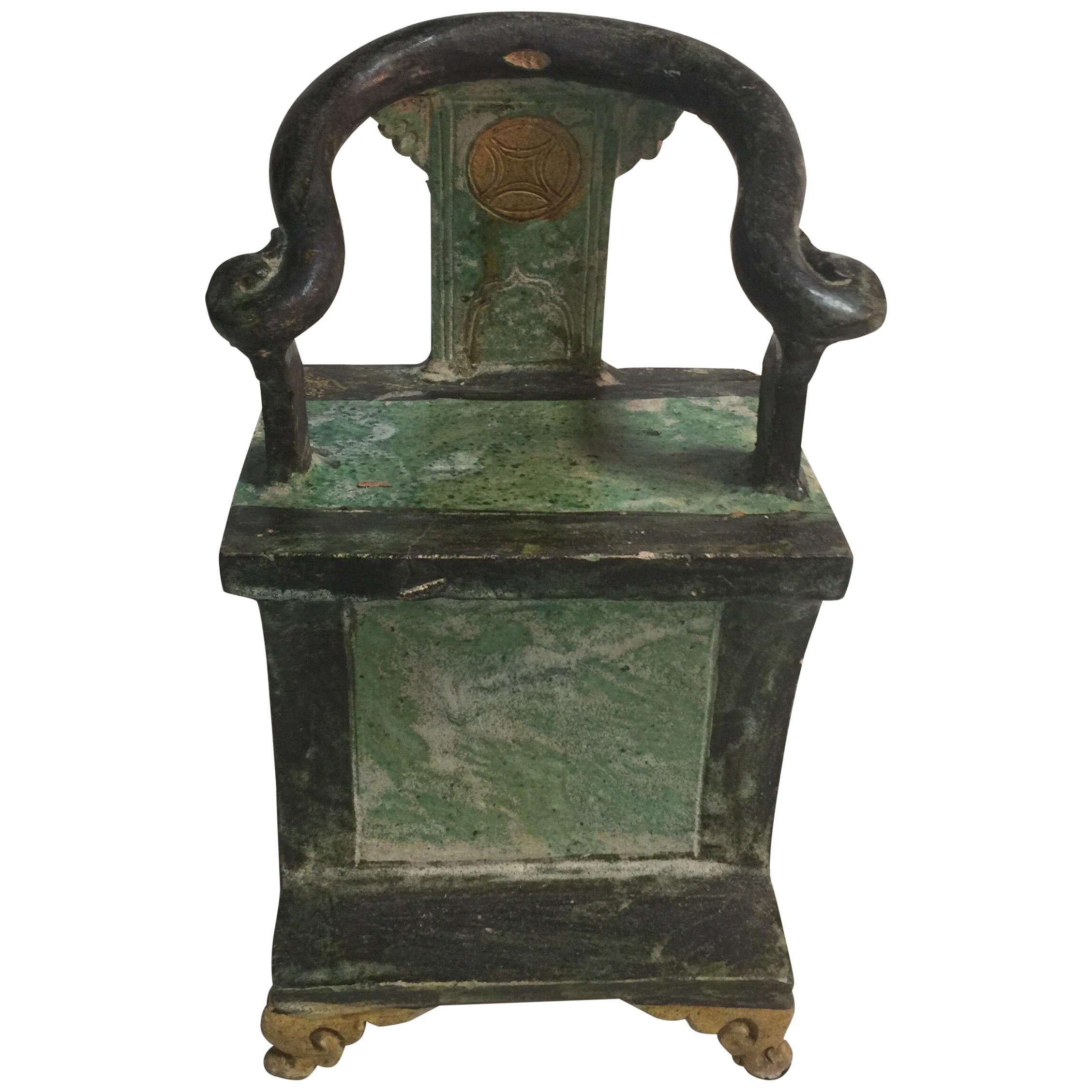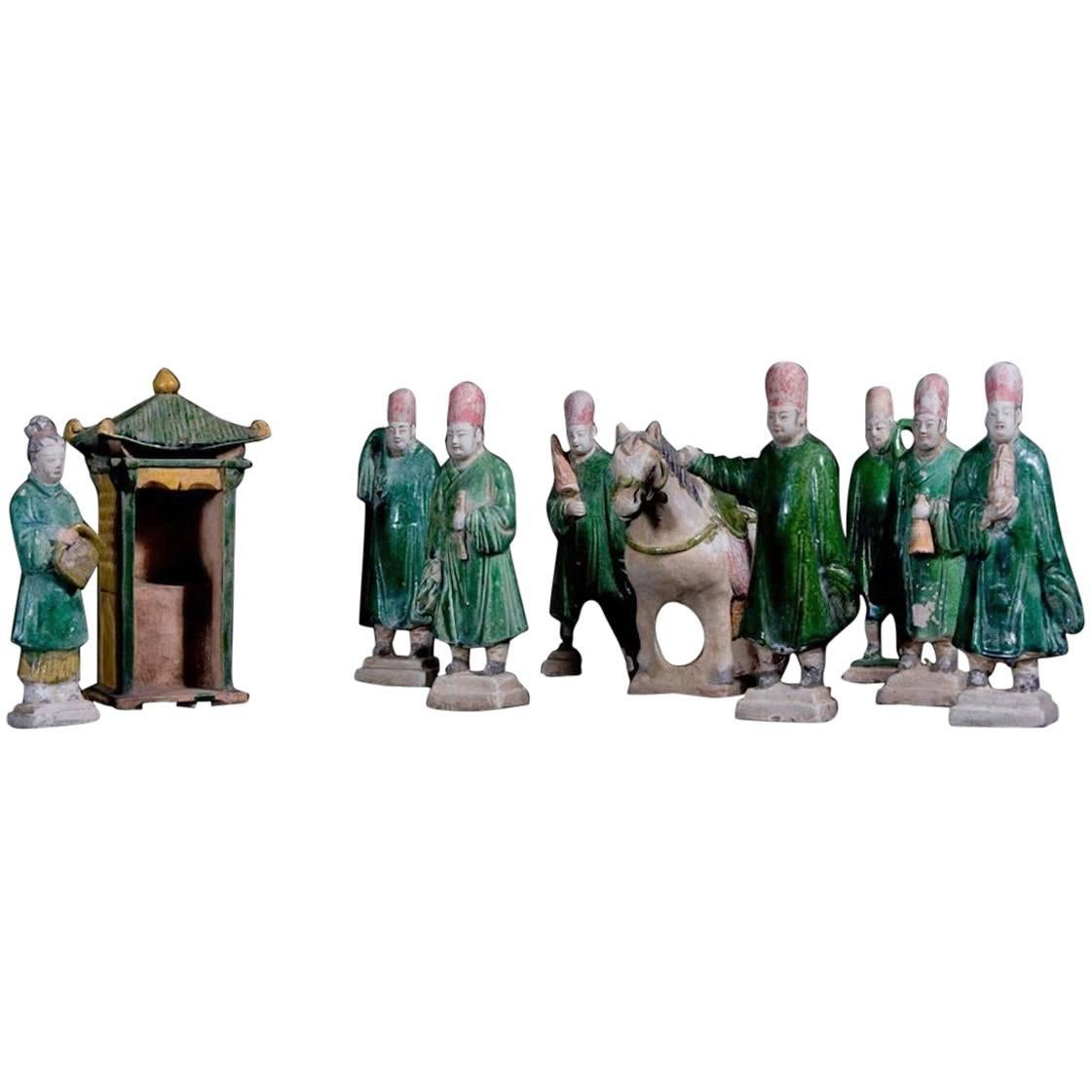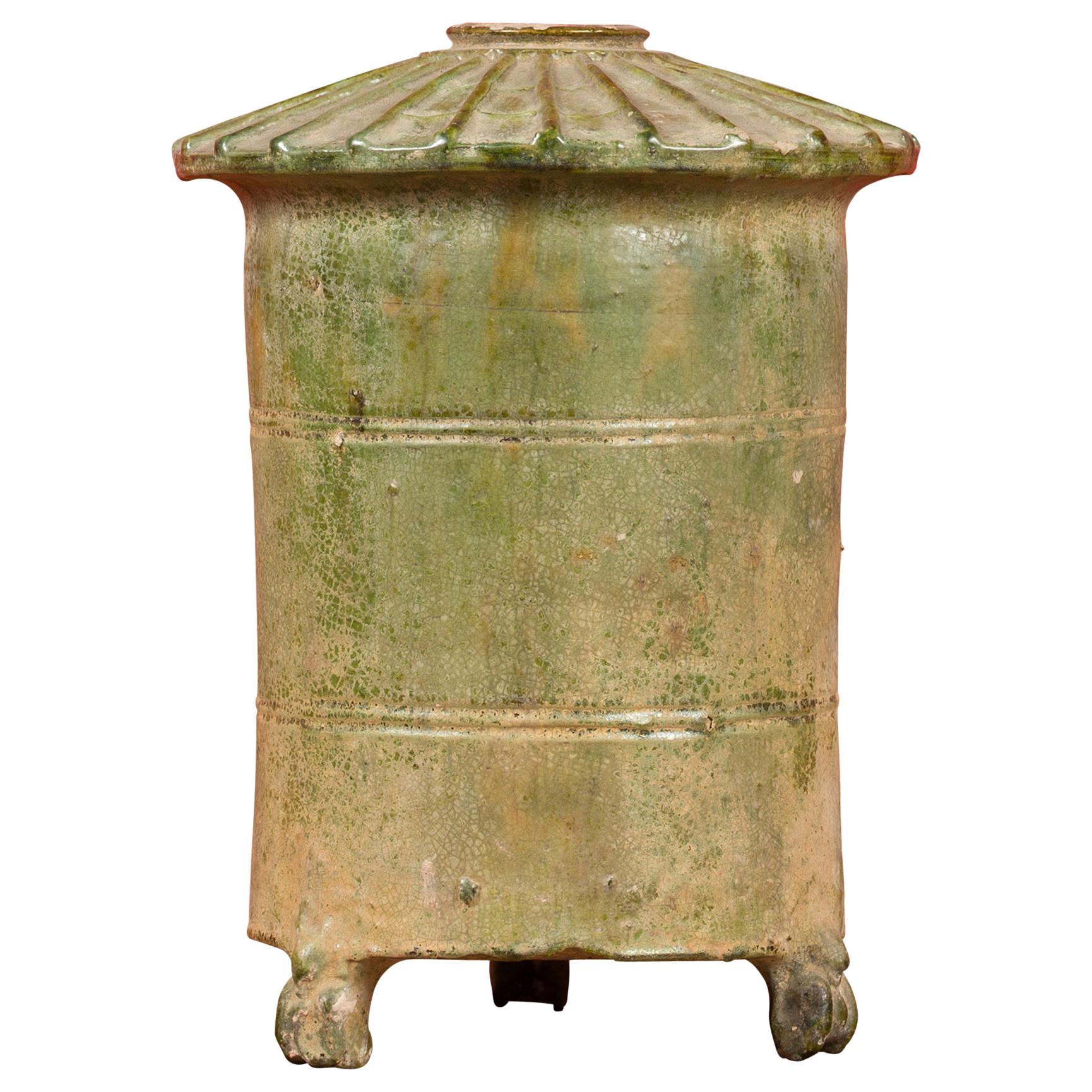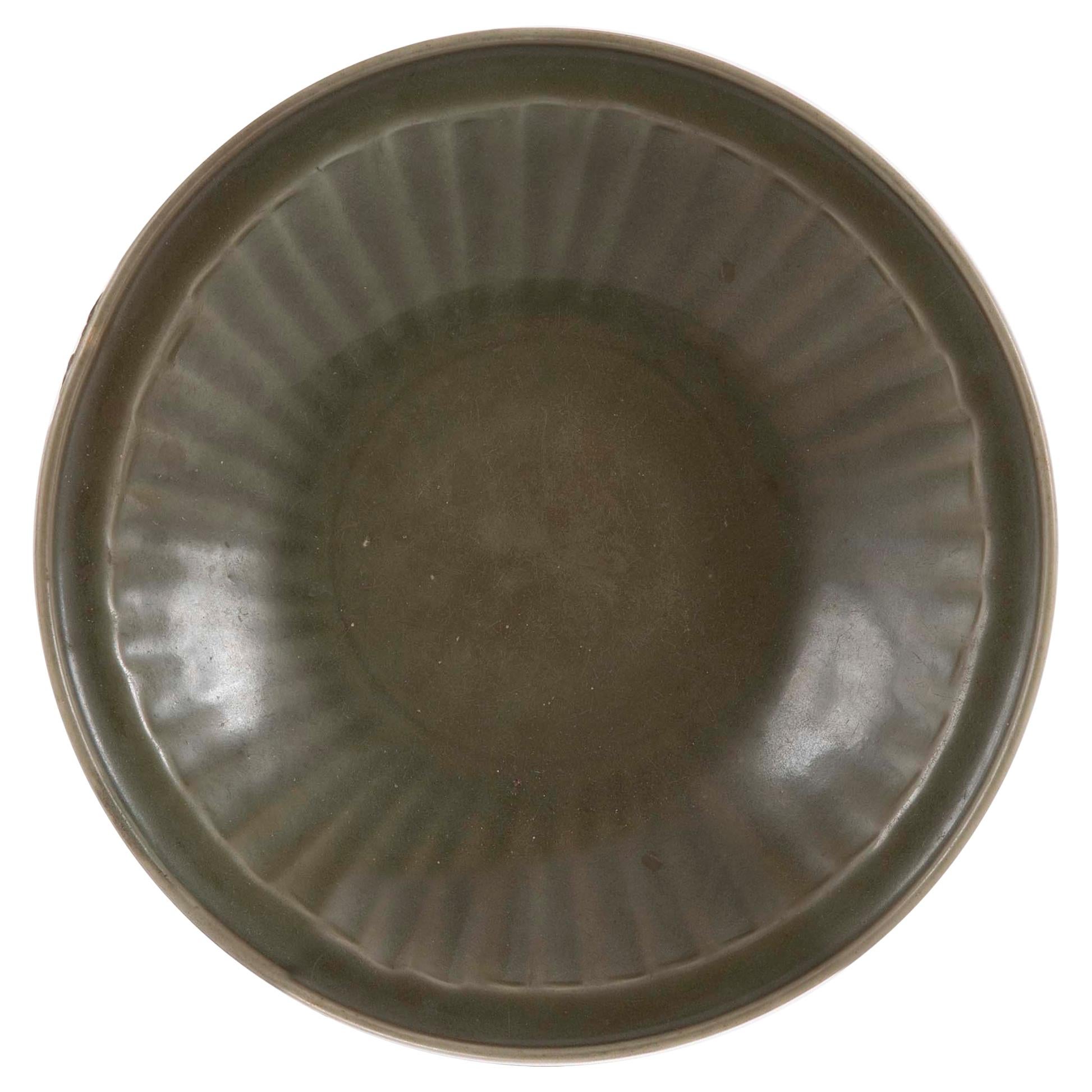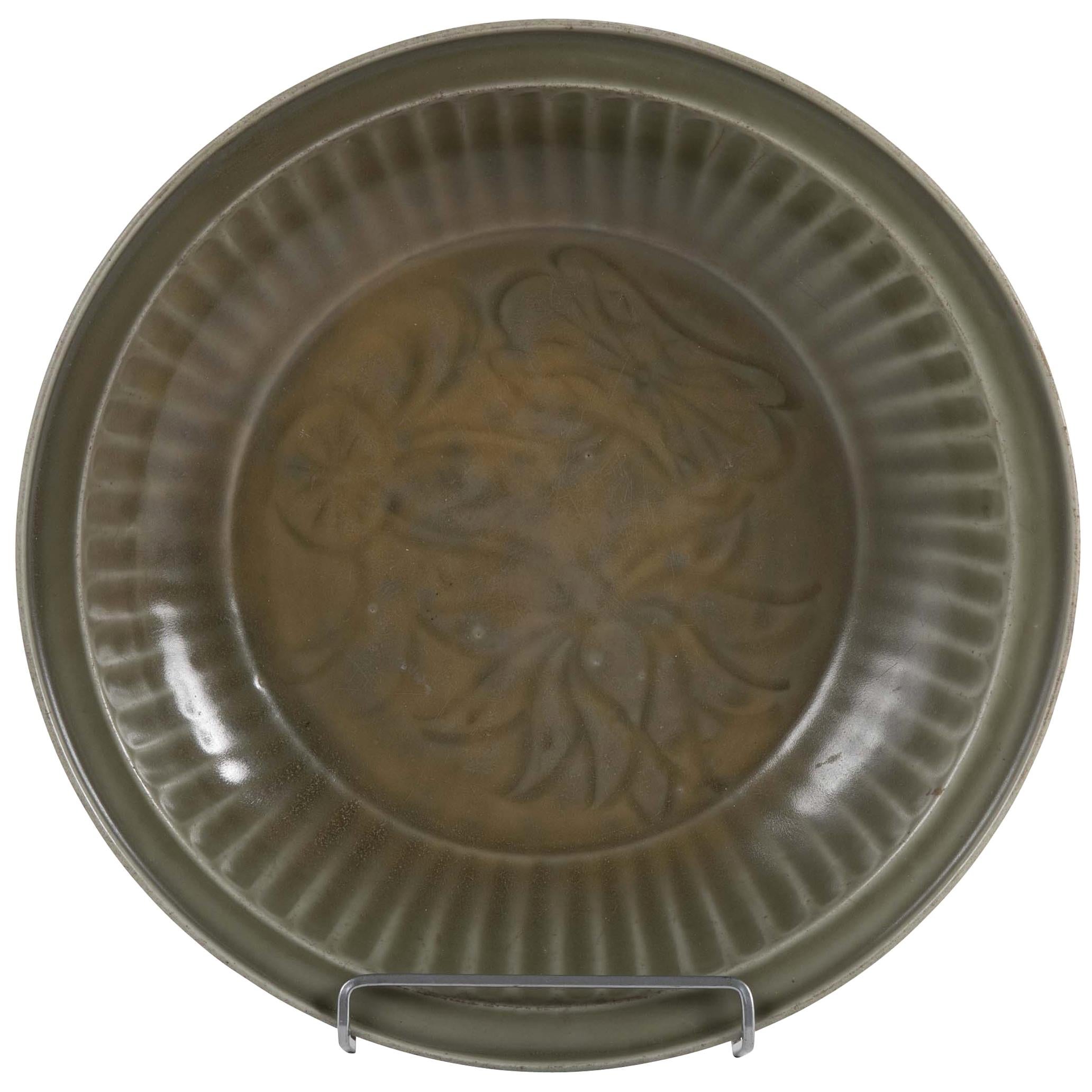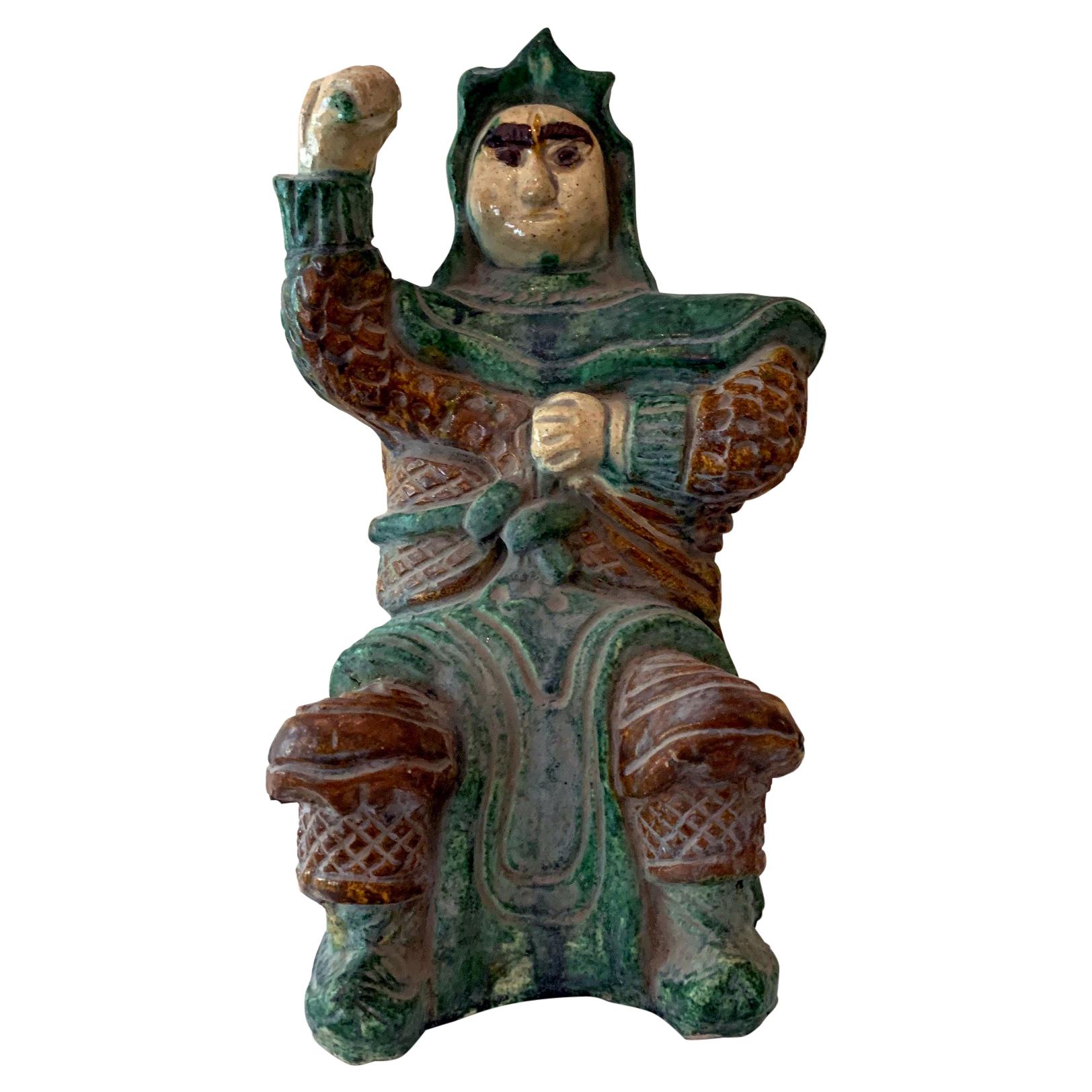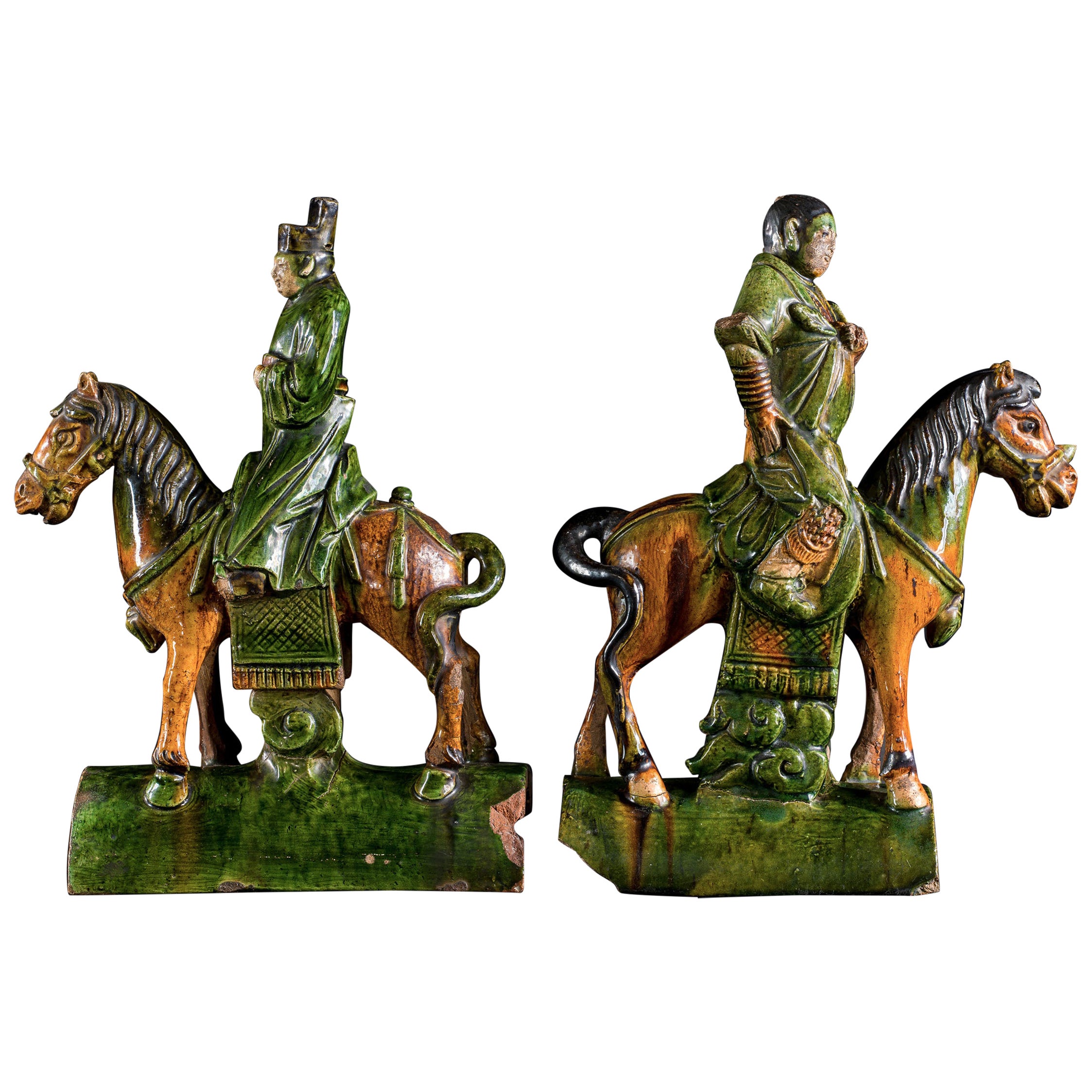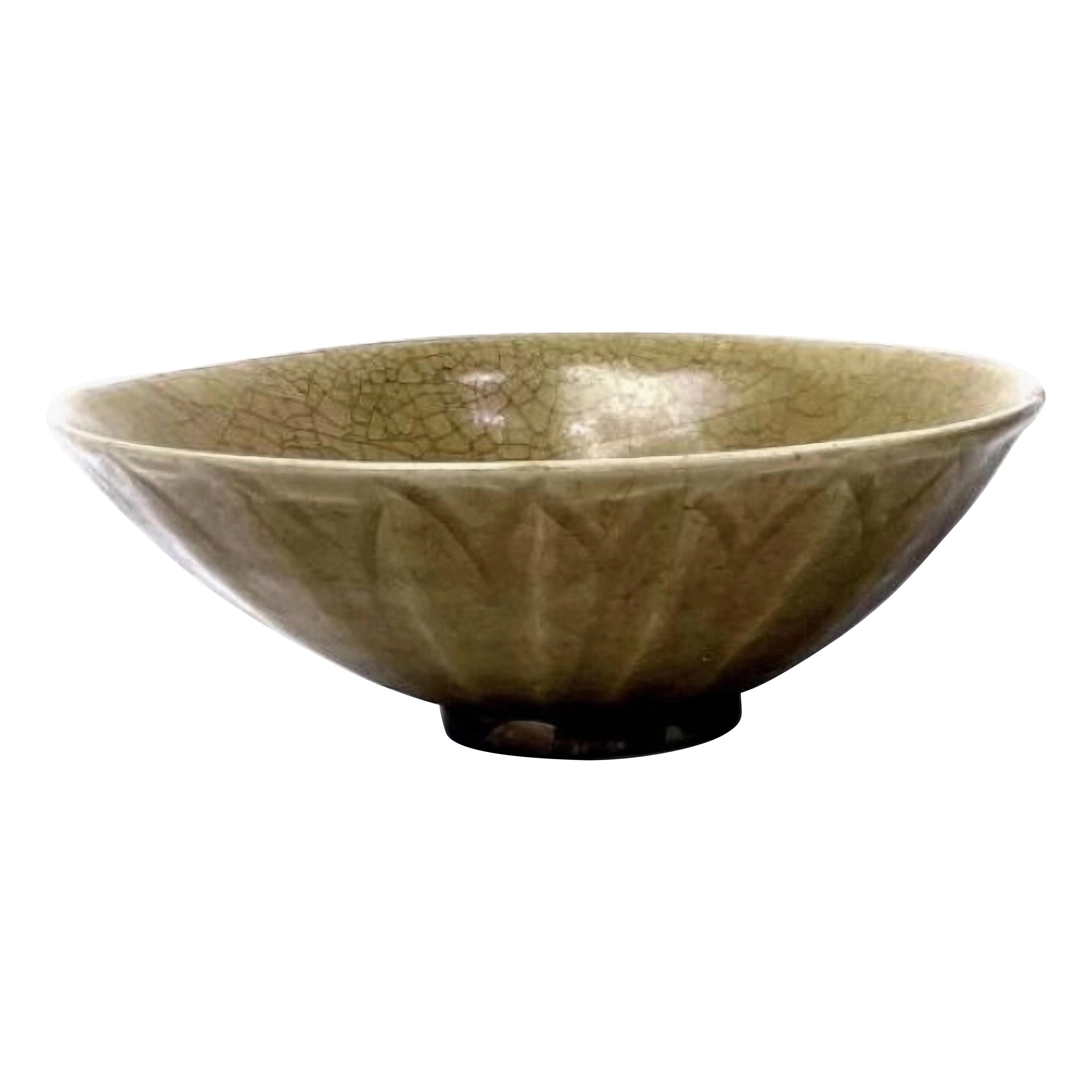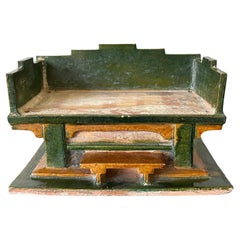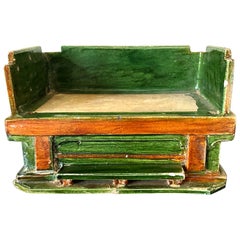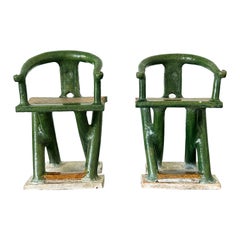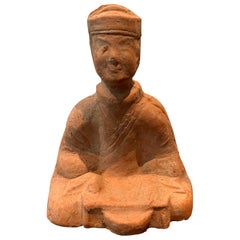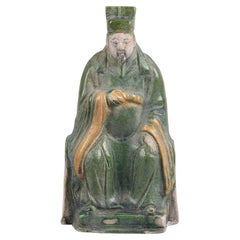
Ming Dynasty Terracotta Tomb Statue Depictinmg a Seated Scholar
View Similar Items
1 of 7
Ming Dynasty Terracotta Tomb Statue Depictinmg a Seated Scholar
About the Item
- Dimensions:Height: 7.68 in (19.5 cm)Width: 4.34 in (11 cm)Depth: 2.37 in (6 cm)
- Style:Ming (Of the Period)
- Materials and Techniques:Terracotta,Polychromed
- Place of Origin:
- Period:
- Date of Manufacture:1500
- Condition:Wear consistent with age and use.
- Seller Location:Basel, CH
- Reference Number:1stDibs: LU6543228475262
Authenticity Guarantee
In the unlikely event there’s an issue with an item’s authenticity, contact us within 1 year for a full refund. DetailsMoney-Back Guarantee
If your item is not as described, is damaged in transit, or does not arrive, contact us within 7 days for a full refund. Details24-Hour Cancellation
You have a 24-hour grace period in which to reconsider your purchase, with no questions asked.Vetted Professional Sellers
Our world-class sellers must adhere to strict standards for service and quality, maintaining the integrity of our listings.Price-Match Guarantee
If you find that a seller listed the same item for a lower price elsewhere, we’ll match it.Trusted Global Delivery
Our best-in-class carrier network provides specialized shipping options worldwide, including custom delivery.You May Also Like
Chinese Ming Dynasty Tomb Funeral Pottery Bed Model
Located in Atlanta, GA
A Chinese stoneware day bed model circa Ming dynasty (15th-17th century). The miniature models were traditionally made as burial offering objects. Pottery models of daily life necess...
Category
Antique 16th Century Chinese Ming Ceramics
Materials
Stoneware
Chinese Ming Dynasty Tomb Funeral Pottery Bed Model
Located in Atlanta, GA
A Chinese stoneware day bed model circa Ming dynasty (15th-17th century). The miniature models were traditionally made as burial offering objects. Pottery models of daily life necess...
Category
Antique 16th Century Chinese Ming Ceramics
Materials
Stoneware
Pair of Chinese Ming Dynasty Tomb Funeral Pottery Chair Models
Located in Atlanta, GA
A pair of Chinese stoneware horseshoe cross chairs circa Ming dynasty (15th-17th century). The miniature models were traditionally made as burial offeri...
Category
Antique 16th Century Chinese Ming Ceramics
Materials
Stoneware
Chinese Terracotta Tomb Figure East Han Dynasty
Located in Atlanta, GA
A small Chinese terracotta tomb figure (Ni Yong) from East Han dynasty (25-220 AD), likely from the area of nowadays Sichuan. It depicts a sitting male wit...
Category
Antique 15th Century and Earlier Chinese Han Ceramics
Materials
Terracotta
Antique Ming Dynasty Chinese Ceramic Ox Bow Tomb Chair from Gracie Gallery
Located in New York, NY
Antique Chinese green glazed ceramic votive chair.
Ming Dynasty 1368 A.D.–1644 A.D. Originally purchsed from Gracie Gallery, New York City; original label on base.
Provenance: A P...
Category
Antique Early 1600s Chinese Ming Ceramics
Materials
Ceramic
$990 Sale Price / set
89% Off
Impressive Terracotta Funerary Procession - Ming Dynasty, China '1368-1644 AD'
Located in San Pedro Garza Garcia, Nuevo Leon
Impressive Funeral Ensamble of 10 Terracotta Glazed Figures in green and caramel colors depicting a votive procession with a palanquin, his four carriers, a horse, a stableman, two musicians, and an offering carrier.
This ensemble is accompanied by a Certificate of Authenticity, and Certificate of Expertise by Jean-Yves Nathan - Specialist in Asian Arts for the CEDEA (The European Confederation of Art Experts).
Burial figurines of graceful dancers, mystical beasts, and everyday objects reveal both how people in early China approached death and how they lived. Since people viewed the afterlife as an extension of worldly life, these figurines, called mingqi, sometimes referred as “spirit utensils” or “vessels of ghosts” disclose details of routine existence and provide insights into belief systems over a thousand-year period.
The Ming dynasty was the ruling dynasty of China – then known as the Empire of the Great Ming – for 276 years (1368–1644 AD). Founded by Chu Yuan-chang, the rebel leader that was successful in removing the mongols from the throne. Chinese control was re-asserted in China and eastern Asia. Literature became more important, schools were created, and the justice system was reformed. The Ming dynasty is described by some as "one of the greatest eras of orderly government and social stability in human history,” was the last imperial dynasty in China ruled by ethnic Han Chinese.
The practice of burying ceramic objects with the deceased went into decline from the 10th to the 14th Century AD. There was a revival in placing miniature representations of glazed terracotta objects such a furniture, food offerings, horses, miniature statues...
Category
Antique 15th Century and Earlier Chinese Ming Antiquities
Materials
Terracotta
Recently Viewed
View AllMore Ways To Browse
Tomb Statue
Asian Green Statues
Ming Statue
Chinese Ming Statues
Terracotta Ming
Chinese Terracotta Statue
Chinese Ming Dynasty Statues
Ming Dynasty Statue
Chinese Polychrome Statue
Arita Charger
Satsuma Vase With Base
Poem Chinese
Asian Jug
Large Antique Asian Bowl
Canton Enamel
Celadon Chinese Export
Wanli Porcelain
Chinese Empress
